The sharp, artistic beauty of a cactus has made it popular in modern home decorating. From tiny succulents on a windowsill to a tall, impressive Saguaro in a corner, these plants bring a touch of the desert's simple style into our homes. But as you place that spiky new friend on your bookshelf, a worrying question might come up: "Is a cactus inside the house bad for feng shui?"
The short answer is, it's not simple. In traditional feng shui, carelessly placing a spiky cactus inside your living space is usually not recommended. However, it's not a strict 'no'. This warning comes from a main idea in feng shui: managing energy, or Chi.
The sharp needles of a cactus are believed to send out a form of sharp, aggressive energy known as "Sha Chi." Putting this type of energy in the wrong place can create tension and conflict. But does that mean you have to send your beloved cactus to the garden? Absolutely not. This guide will give you a complete, detailed understanding of cactus inside the house feng shui. We will go beyond a simple "yes" or "no" to explore correct placement, powerful solutions for cactus lovers, and even feng shui-friendlier alternatives, giving you the power to decorate with both style and purpose.
Cacti and "Sha Chi"

To understand the feng shui view on cacti, we first need to understand the basic idea of energy flow in a space. This is the "why" behind all the placement rules.
What is Chi?
In feng shui, Chi (or Qi) is the invisible life force energy that flows through everything—including your home. When Chi is healthy and strong, it flows smoothly and gently, like a winding stream. This positive energy, often called Sheng Chi, promotes health, harmony, happiness, and success. The main goal of feng shui is to grow and maintain the smooth flow of this helpful Sheng Chi throughout your living space.
Understanding "Sha Chi"
Sha Chi, sometimes called "killing" or "attacking" energy, is the opposite of Sheng Chi. It is harsh, sharp, fast-moving, and disruptive. Think of it as the energy of a straight, fast-moving highway compared to a gentle country road. This type of energy is created by sharp angles and pointed objects that "cut" or "pierce" the gentle flow of Chi, causing it to become chaotic and aggressive. The sharp, many needles of a cactus are a natural and strong source of Sha Chi.
Why Sha Chi Matters
Long exposure to Sha Chi in key areas of your home can show up in your life in unwanted ways. It can contribute to a feeling of being "on edge," leading to more frequent arguments, tension among family members, stress, and a general sense of unease or struggle. The main principle of 'Forms and Shapes' in Feng Shui says that the physical form of an object directly influences the type of energy it sends into its environment. Just as a comfortable, rounded armchair invites you to relax, a chair with sharp, angular lines can feel less welcoming. The cactus, with its protective armor of needles, sends out a defensive, prickly energy that must be managed with care.
| Energy Type | Quality | Analogy | Effect on Home |
|---|---|---|---|
| Sheng Chi | Positive, flowing, gentle | A winding stream | Promotes harmony, health, and opportunity. |
| Sha Chi | Negative, sharp, aggressive | A poison arrow or sharp knife | Can create tension, conflict, and blockages. |
The "Do Not Place" List
Understanding Sha Chi leads us to the most important part of practicing good cactus feng shui: knowing where not to place them. Placing a cactus in these high-risk zones can actively disrupt the positive energy you want to grow in the most important areas of your life. For a peaceful home, avoid placing a spiky cactus in the following locations.
| Location | Feng Shui Bagua Area / Function | Potential Negative Effect of Cactus |
|---|---|---|
| Bedroom | Rest, Relationships, Health | The active, piercing energy of a cactus is the opposite of the calm, restorative energy needed for good sleep. It can disrupt rest, create unconscious tension, and lead to a "prickly" or argumentative relationship with your partner. |
| Living Room (Main Area) | Family Harmony, Social Gatherings | This is the heart of your social life at home, where family and friends gather. Placing a source of Sha Chi here can create an undercurrent of tension, making conversations feel more like debates and the atmosphere less welcoming. |
| Dining Room | Nourishment, Abundance | The dining table represents abundance and the bonds of family. The sharp energy of a cactus can symbolically "cut" into this nurturing energy, creating conflict during meals and disrupting the sense of family connection. |
| Kitchen | Health, Nourishment | The kitchen is the "hearth" of the home, directly linked to the health and well-being of its inhabitants. Introducing conflict energy here can negatively impact the energy of the food being prepared and, by extension, your health. |
| Home Office (On Your Desk) | Career, Focus, Success | While you might think a cactus adds a cool look to your workspace, its "attacking" energy pointed at you for hours can lead to increased stress, work-related conflicts with colleagues, and a feeling of being constantly under attack or overwhelmed. |
| Front Door (Inside) | The "Mouth of Chi" | The main entrance is where your home draws in most of its energy and opportunity from the outside world. Placing a cactus right inside the door can act like a guard that pushes away this positive Chi, blocking opportunities from entering. |
| Center of the Home | The "Heart" (Health & Unity) | The center of your home, known as the Tai Chi, is the grounding point that affects all other areas. Placing a source of strong Sha Chi here can negatively impact the overall health, stability, and unity of the entire household. |
The Strategic Exception
After learning where not to place a cactus, you might think its only place is outside. You're partially right. The key is that the protective, aggressive nature of a cactus's Sha Chi can be used for your benefit, turning it from a problem into a powerful solution.
Just as a guard dog is kept outside the house to protect its perimeter, the Sha Chi of a cactus can be strategically placed to deflect or counter negative energy coming from outside your home. This is an advanced feng shui application that uses the plant's natural qualities for defense.
Best Protective Placements
The goal is to point the sharp energy outward, away from your living space, creating an energetic shield.
-
Outside the Front Door: Placing a strong cactus (or a pair) on either side of your front door can act as a powerful guardian. It helps to ward off negative energy, deter potential intruders, and counter "poison arrows"—sharp architectural features from neighboring buildings (like a sharp roof corner), a road pointing directly at your door (a T-junction), or a large, imposing structure. It's important that they are not directly in front of the door, which would block entry, but to the sides.
-
On a Balcony or Windowsill: If your window or balcony faces a source of negative energy, such as a cemetery, a police station, a hospital, or the sharp corner of another building, placing a cactus on the windowsill or balcony rail can serve as a protective barrier. The cactus effectively absorbs or deflects this incoming Sha Chi before it can enter your home.

- In the Fame & Reputation Area (Bagua): The Fame & Reputation area of your property is located in the South sector. If you have an outdoor space in this area, like a south-facing balcony or patio, placing a cactus here can help protect your reputation from gossip, slander, and backstabbing. The fiery, protective energy of the cactus works to defend your good name.
Harmonizing Your Cactus
What if you're a renter with no outdoor space, or you simply love the look of your cactus in a specific indoor spot? For dedicated cactus lovers, there are methods to balance the plant's energy and reduce its negative effects. This is a problem-solving approach for those determined to make it work.
Step 1: Isolate the Energy
The first and simplest step is containment. If you must keep a spiky cactus indoors, place it in a very low-traffic area where its Sha Chi won't constantly interact with people. Think of a seldom-used guest room with a window, a utility room, or a corner of a large room that people don't walk past frequently. The less direct interaction it has with the home's occupants, the less impact its energy will have.
Step 2: Soften with Water
In the five-element theory of feng shui, the sharp needles of a cactus are associated with the Metal element. The Metal element can be softened or "exhausted" by the Water element. By introducing the Water element around your cactus, you can help soothe its sharp energy.
- Practical Tips: Place your cactus in a pot with a wavy, flowing design, which represents water. Choose a pot that is blue or black, the colors of the Water element. You can also place a small, beautiful bowl of fresh water near the plant (but not so close that it over-waters the soil) to help balance the energy.
Step 3: Ground with Earth
Another way to manage the sharp Metal energy is to strengthen the element that creates it: Earth. A strong Earth element can ground and contain the cactus's energy, making it more stable and less aggressive.
- Practical Tips: Use a pot made from an Earth element material. A heavy, square-shaped ceramic, terracotta, or clay pot is ideal. The square shape represents Earth, and the material itself strengthens this grounding influence. Avoid thin plastic or metal pots, which do little to contain the energy.
An Expert's Approach
At THE QI FLOW, when a client has a sentimental cactus they must keep indoors, we often recommend a simple but powerful remedy: tying a small, red ribbon or string around the plant's pot. In feng shui, the color red represents the Fire element. According to the five-element cycle, Fire controls and transforms Metal. This small act of adding red helps to consciously control and transform the sharp Metal energy of the needles, turning a source of potential conflict into a point of contained strength. It acts as a sign of intention—acknowledging the plant's energy and actively choosing to manage it.
Choosing Friendlier Varieties
A crucial point often missed in discussions about cactus inside the house feng shui is that not all cacti and succulents are created equal. The level of Sha Chi a plant emits is directly related to how sharp and spiky it is. This detailed understanding opens up a world of possibilities for plant lovers. You can enjoy the desert look with far less worry by choosing "friendlier" varieties.
| Plant Type | Feng Shui Energy | Best For... |
|---|---|---|
| Highly Spiky Cacti (e.g., Barrel Cactus, Prickly Pear, most Cereus) | Strong Sha Chi. Their prominent, sharp needles project an aggressive, protective energy. This is the type of plant that requires the most careful placement. | Outdoor protection and warding off negative external influences. Generally avoid indoors in high-traffic or restful areas. |
| Rounded or Fleshy Succulents (e.g., Jade Plant, Echeveria, Haworthia) | Gentle, nurturing energy. These plants often have soft, rounded, fleshy leaves that store water. Their shape is considered lucky, with the Jade Plant's leaves resembling coins, making it a famous wealth magnet. | Excellent for almost any indoor location. Ideal for wealth and money corners (Southeast), living rooms, and home offices to attract abundance and promote calm. |
| Trailing or Soft-Spined Cacti (e.g., Christmas/Thanksgiving Cactus, Rhipsalis, Fishbone Cactus) | Softer, flowing energy. These cacti lack sharp, dangerous spines. Their leaves or stems often hang downwards in a gentle cascade, which promotes a soft, flowing energy rather than a piercing one. | Great for placing on shelves or in hanging baskets where their energy can "cascade" softly into the room. They are a safe and beautiful choice for living rooms and offices. |
Excellent Plant Alternatives
If you've decided the potential energetic complications of a spiky cactus aren't for you, but you still want a beautiful, low-maintenance houseplant, you're in luck. Feng shui offers a host of "approved" plants that not only look stunning but actively work to improve your home's Chi.
-
Jade Plant (Crassula ovata): Often called the "money plant," the Jade Plant has round, coin-like leaves that symbolize wealth and prosperity. It's a hardy succulent that is believed to attract good fortune. It's perfect for a home office to stimulate business success or the wealth corner (Southeast) of your home.
-
Snake Plant (Sansevieria trifasciata): Don't let its other name, "mother-in-law's tongue," fool you. The Snake Plant is a feng shui powerhouse. Its strong, upward-growing leaves bring a vibrant, lifting Wood element energy. It's also a NASA-approved air purifier. It is incredibly resilient and suitable for almost any room (though some practitioners avoid it in a young child's bedroom due to its slightly sharp leaf tips).
-
Money Tree (Pachira aquatica): This plant is famously associated with locking in wealth and good fortune. Its braided trunk is said to trap luck, and its five-lobed leaves represent the five feng shui elements. It's a popular choice for businesses and home wealth corners.
-
Peace Lily (Spathiphyllum): The Peace Lily is a triple threat: it's beautiful, cleanses the air of toxins, and helps to smooth the energy in a space. Its elegant white flowers are a symbol of peace and purity, making it wonderful for living areas or bedrooms to promote a calm atmosphere.
Decorate with Intention
The prickly question of cactus inside the house feng shui is not about the plant itself being "good" or "bad." It is, and always has been, about placement and intention. A cactus is a living entity with a strong, protective energy that must be respected and understood. By being mindful of where you place it, you can avoid creating energetic friction in your home.
The key rules are simple: keep spiky, aggressive cacti out of your primary living areas, your bedroom, and your kitchen. Reserve these potent plants for protective duty outside your home, where their Sha Chi can serve as a guardian. If you must keep one inside, use the balancing techniques of isolation, elemental cures, and intentional remedies like the red ribbon.
Better yet, embrace the vast world of succulents and choose softer, friendlier varieties like the Jade Plant or a trailing Rhipsalis for your indoor decor. They offer a similar look without the energetic complications.
Feng shui is not about rigid rules, but about creating a conscious, supportive environment. By understanding the energy of the objects you bring into your home, you can decorate with intention and cultivate a space that truly nurtures you.
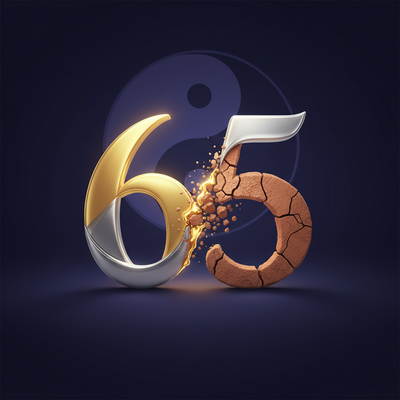
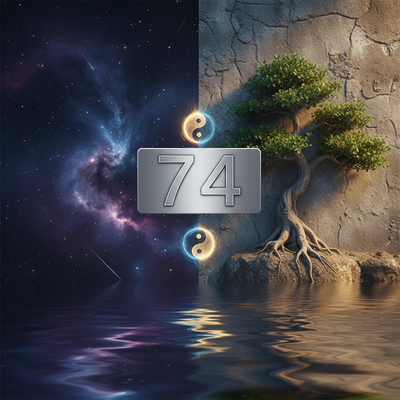

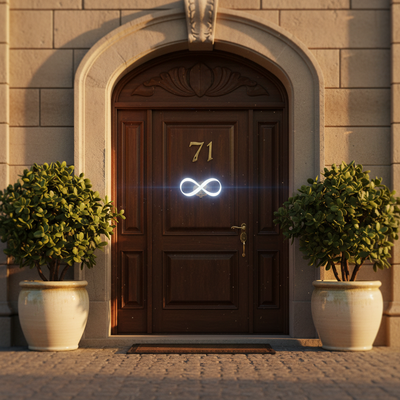
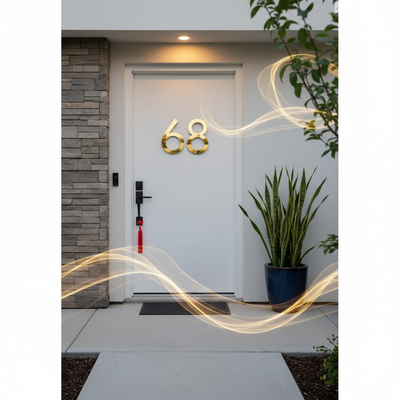


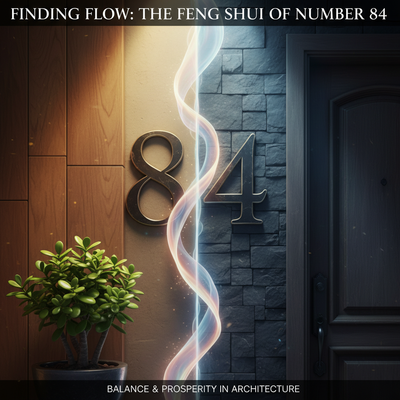
0 comments